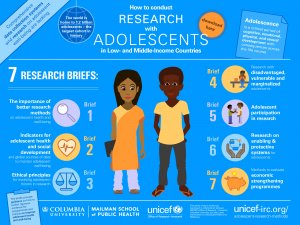 Adolescence is the period of transition period between childhood and adulthood. This period of time includes some major changes, not only to the body, but how a young person views themselves in the world. The physical, sexual, cognitive, social, and emotional changes happen swiftly during this time in a young person’s life. Such changes can cause anxiety and anticipation for the youth and their families. Understanding what to expect during each phase of adolescence can promote healthy development and an easier transition to early adulthood.
Adolescence is the period of transition period between childhood and adulthood. This period of time includes some major changes, not only to the body, but how a young person views themselves in the world. The physical, sexual, cognitive, social, and emotional changes happen swiftly during this time in a young person’s life. Such changes can cause anxiety and anticipation for the youth and their families. Understanding what to expect during each phase of adolescence can promote healthy development and an easier transition to early adulthood.
Early Adolescence (Age 10-13)
During early adolescence, the child starts to grow rapidly. This phase includes many body changes, including hair growth, breast development in females, and enlargement of the testicles in males. These changes typically start one to two years sooner in females versus males. It can be normal for these changes to begin at age 8 for girls, and 9 for boys. Many girls can start their period at age 12, which is typically 2-3 years following breast development. Such rapid development can cause curiosity and anxiety, if they do understand or do not know what is normal. Pre-teens also feel an increased need for privacy. In this process they may push boundaries and may respond poorly when parents reinforce limits.
Middle Adolescence (Age 14-17)
 Physical changes from puberty can continue into middle adolescence. Most males at this point will begin their growth spurt, and puberty related changes will continue. Their voices may get deeper and acne may appear. At this point the physical changes may be nearly finished for females, and most typically have regular periods. Also at this age, many teens begin to explore romantic and sexual relationships. They may begin to question and explore their sexual identity. This can also be a stressful time if they do not have steady support from peers or family. Many middle adolescents have more arguments with their parents as they continue to struggle for independence. They may begin to spend more time with their peers compared to their families, causing peer pressure to peak at this age. The brain also continues to change and mature at this stage, but there still are many differences in how these middle adolescent think compared to adults.
Physical changes from puberty can continue into middle adolescence. Most males at this point will begin their growth spurt, and puberty related changes will continue. Their voices may get deeper and acne may appear. At this point the physical changes may be nearly finished for females, and most typically have regular periods. Also at this age, many teens begin to explore romantic and sexual relationships. They may begin to question and explore their sexual identity. This can also be a stressful time if they do not have steady support from peers or family. Many middle adolescents have more arguments with their parents as they continue to struggle for independence. They may begin to spend more time with their peers compared to their families, causing peer pressure to peak at this age. The brain also continues to change and mature at this stage, but there still are many differences in how these middle adolescent think compared to adults.
Late Adolescents (Age 18-21)
Late adolescents typically have completed physical development fully and have grown to their adult height. At this point they typically also have more impulse control and are better able to gauge risk and reward. At this point they also may be more focused on the future and have a better sense of their own individuality.
How to Help Navigate Adolescence!
- Help your child anticipate changes in their body.
- Start early conversations about other important topics.
- Keep conversations with your child positive.
- Be supportive and set clear limits with high expectations.
- Discuss risky behaviors and use consequences.
- Respect independence and individuality.
Adolescent years can feel like a roller coaster! By maintaining positive relationships during these stages, this roller coaster ride can be more enjoyable!
References
Allen, B., MD, FAAP, & Waterman, H., DO. (2016). Stages of Adolescence. Retrieved September 03, 2020, from https://www.healthychildren.org/English/ages-stages/teen/Pages/Stages-of-Adolescence.aspx
Allen, M., Phd, RN, & Stollery, B., MD, FAAP. (2018). Late Adolescence. Emergent Brain Dynamics, 40(6). doi:10.7551/mitpress/11957.003.0017
Green, H. (Director). (2014). Adolescence: Crash Course Psychology #20 [Video file]. Retrieved 2020, from https://youtu.be/PzyXGUCngoU
Images, G. (n.d.). The Growing Child: Adolescent 13 to 18 Years [Photograph].
Stanley, H. (2016). Adolescent Physical Development and Health Issues. Child, Adolescent and Family Development, 20(3), 385-412. doi:10.1017/cbo9781139164948.022

Hi Brooke,
I really enjoyed how you listed the milestones by age. Adolescence is such a fragile time in a child’s life due to all the changes, but I didn’t realize just how much is going on their bodies. I also really enjoyed your video it was very informative! The list you created is clear and concise.